
Which site would you like to visit?
By clicking the retail or wholesale site button and/or using rarewineco.com you are choosing to accept our use of cookies to provide you the best possible web experience.
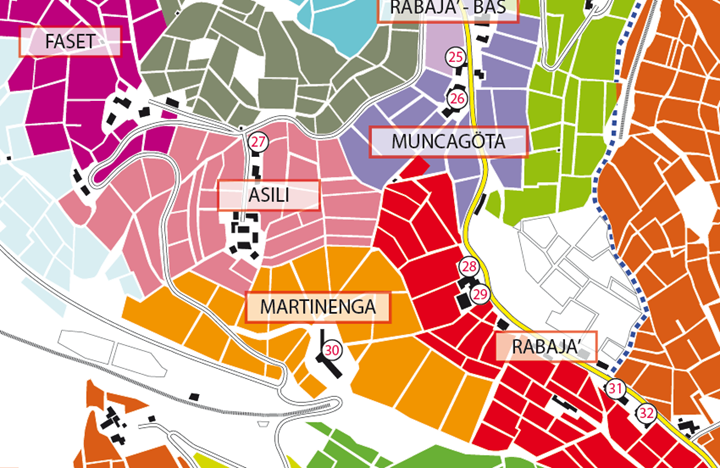
Alessandro Masnaghetti’s work has been praised by journalists and publications ranging from Antonio Galloni and Jancis Robinson to John Gilman and the Wine Spectator.
And Alessandro's interview on Levi Dalton's I'll Drink to That! offers some of the best insights of all into his genius and his contributions to our understanding of European wine regions. (See below to listen to the full interview.)
It’s no wonder his vineyard maps have been called the finest ever created and his books demonstrate that he is just as skilled with prose as he is with vineyard mapping.
The Rare Wine Co. has represented Alessandro Masnaghetti as the sole U.S. agent for his European maps and books for nearly a decade. And so it is a particular honor for us to be able to offer all of Alessandro's available printed works for Barolo & Barbaresco below.
Click on any of the following links to jump to a specific item
Click below to listen to Alessandro's interview with Levi Dalton:
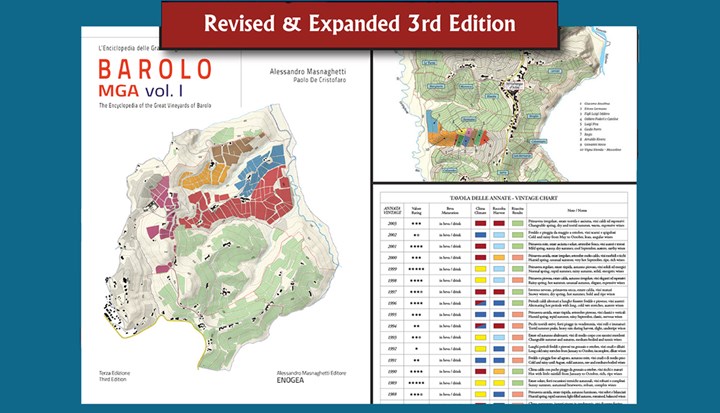
Since Alessandro Masnahetti published his first book on Barolo in 2015, he has continued to relentlessly explore the Langhe's terroirs, producers, and wines.
Over the past eight years, he has published four more works on the Langhe—Barolo MGA Vol II, Barolo MGA Vol I 2nd Edition, and 2 editions of Barbaresco MGA—each book more exciting than the one before.
But Alessandro's first four books hardly prepared us for his latest effort, which arrived early this year.
Though he modestly titles it Barolo MGA Vol I, 3rd Edition, it is actually a very different book from the first two editions. It's also a massive 548 pages, an 85-page increase from the 2nd edition.
His first two editions emphasize terroir, wine character and vineyard ownership, and he continues to build on that legacy with the most beautiful and informative maps so far.
But for us, the real excitement is the shifting focus of Alessandro's research to the Barolos themselves. That is great news for us as collectors and consumers.
For the first time since Sheldon Wasserman first attempted it in 1991, we were starting to get a full picture of the history of Barolo bottlings. Organized by MGA (which is today's official name for a cru), Alessandro provides listings with dates and names of hundreds of different "cru" Barolos.

Some of these bottlings are well known to us, but it's great to know authoritatively the first vintage in which they were made.
Others are fascinating obscurities, such as some early Monfortinos labeled as coming from the Mosconi and Romagnaso crus! (It reminds us that, until 1974, Giacomo Conterno owned none of its own vineyards, and so its fruit sources, even for Monfortino, were likely to shift.)
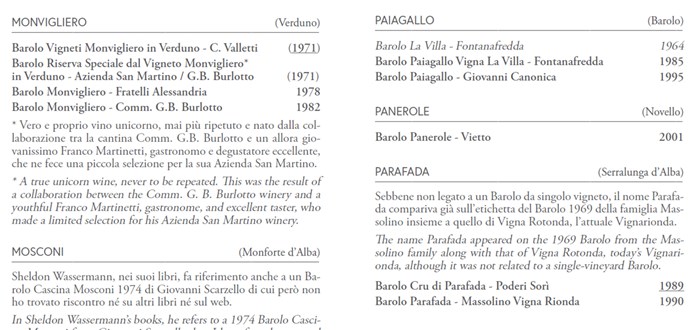
This only scratches the surface of all the new information to be found in the 3rd Edition of Barolo MGA Vol. I. You'll need to get a copy for yourself.
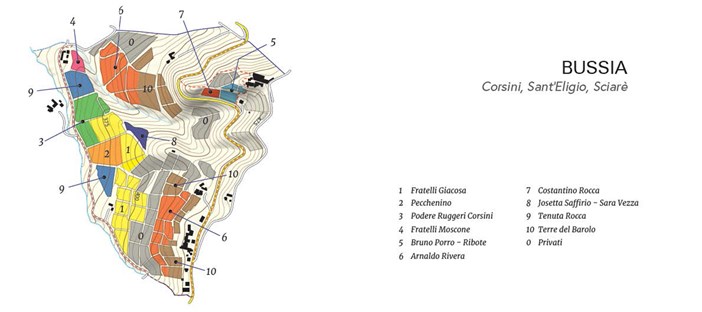
You will also receive a free one-year subscription to Alessandro Masnaghetti's www.barolomga360.it.
Barolo MGA Vol. I, 3rd Edition
The Great Vineyard Encyclopedia
by Alessandro Masnaghetti
548 pp, hardcover.
$95 + shipping
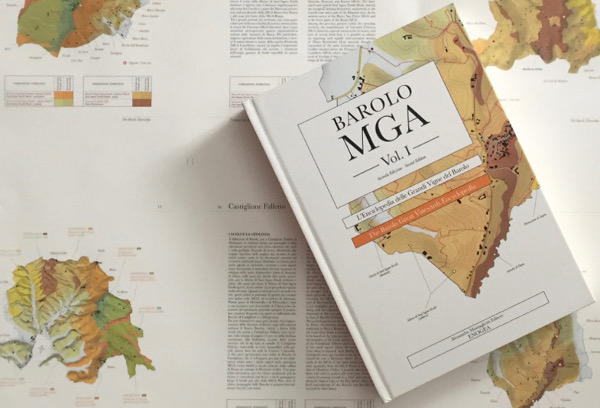
Alessandro Masnaghetti revolutionized our knowledge of Barolo with Barolo MGA, The Barolo Great Vineyard Encyclopedia. This now-classic book brought us out of the dark ages in terms of our knowledge and understanding of this greatest of Italian wines.
He followed with two more landmark works: Barbaresco MGA, The Barbaresco Great Vineyard Encyclopedia (published 2016) and Barolo MGA Vol. II: Vintages, Recent History, Rarities and Much More (published early 2018).
But the original Barolo MGA, The Barolo Great Vineyard Encyclopedia was arguably Alessandro’s greatest accomplishment, and the work that has done so much to elevate the world’s understanding of Barolo. As a compendium of what we know of the vineyards, growers and wines, it has become the go-to book for those of us with a passion for Barolo.
We sold nearly 1,000 copies in just the first year of publication. And we were sold out for nearly two years, turning down literally hundreds of further requests for copies. But in the meantime, Alessandro was hard at work on a revised edition, which he released in 2019.
Even bigger and better than the original, it is a whopping 464 pages in length (56 more than the 1st edition). And not only have all the maps been updated for 2019, so have the listings of wines and wineries. Production figures are current as of the 2017 harvest.
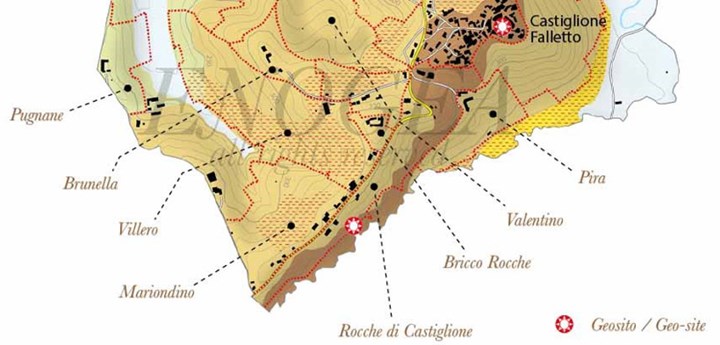
The Deepest Look Yet at Barolo’s Soils & Geology
Alessandro's newest edition will continue to advance the world's knowledge of Barolo. And its most compelling feature is a lavishly illustrated chapter on the region's geology.
He has long rejected the popular notion that Barolo can be understood by dividing the zone into two parts based on soil. According to Alessandro, who may know more about Barolo’s vineyards than anyone alive, such a division explains very little about why individual crus can have such distinctive character.
And so, working for years with three highly regarded earth scientists, he managed the first “complete description of the complex geology of the Barolo production zone.” Even if you own the first edition, you’ll want the second for this chapter alone.
Encyclopedic in its Scope
The 2nd edition of Barolo MGA, The Barolo Great Vineyard Encyclopedia is the result of a quarter century of study, unlocking the mysteries of why Barolo's soil produces such profound wines. Representing an incredible 11 years of work, it demands a place in the library of anyone who loves Barolo. And that includes owners of the 1st edition.
Barolo MGA includes more than 200 3-D images of the region's vineyards; in-depth analyses of the individual communes; 170 fact sheets on each cru and a directory (with contact information) of growers and producers. In addition, a glossary demystifies over 750 place names, brand names and historic zones. Text is in both Italian and English.
Barolo MGA Vol. I, 2nd Edition
The Great Vineyard Encyclopedia
by Alessandro Masnaghetti
464 pp, hardcover.
$89.95 ea.
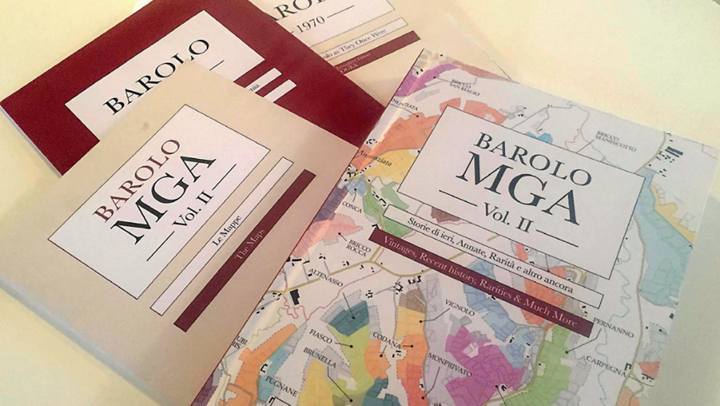
Alessandro’s energy, curiosity and passion for Barolo is fathomless, and his tireless research has now yielded a second book on the subject—Barolo MGA Vol. II: Vintages, Recent History, Rarities and Much More—covering the evolution of the Barolo region from the early 20th century until today.
The essential companion to the first volume, Barolo MGA Vol II is a fascinating exploration of how Barolo’s area under vine has transformed, both the entire region and particular crus.
Masnaghetti also discusses how changes in climate, yields, clones and viticultural practices have affected the harvest periods of the nebbiolo grapes and crus. And he covers many other subjects as well—some of which have either rarely or never been written about before—making Barolo MGA Vol. II a treasure trove of information for anyone seeking a greater understanding of The King of Wines.
Each topic is covered in extraordinary detail, as we’ve come to expect from Barolo’s greatest contemporary scholar. Once again, we’re reminded what a treasure Alessandro is and why, over the past five years, he has become a wine icon, despite never having made a bottle of wine.
Exhaustively Informative
Barolo MGA Vol. II is a stunningly complete investigation of how both human and environmental influences have shaped Barolo over the past century. Whether providing the first English translation of Lutati’s pathbreaking 1929 On the Delimitation of Wine Zones—or describing in detail the temperatures, rainfall and harvest dates of each vintage since 2000—Alessandro leaves few stones unturned.
He includes an exhaustive cru by cru record of harvest dates from 2007 to 2017. And he digs deeper with historical harvest records of such celebrated producers as Cavallotto (from the 1931 vintage) or Giuseppe Rinaldi (from the 1975 vintage).
Then there’s Alessandro’s first-ever history of Serralunga d’Alba’s Vigna Rionda, which Bruno Giacosa made famous from the 1960s to 1990s with his epic Barolo Collina Rionda. In five maps (1970, 1990, 1997, 2007 and 2017) he tracks the changes both of plots and owners over the years.
Alessandro also looks at changes to Barolo’s wooded areas, a subject of great concern these days, making some highly interesting discoveries along the way.
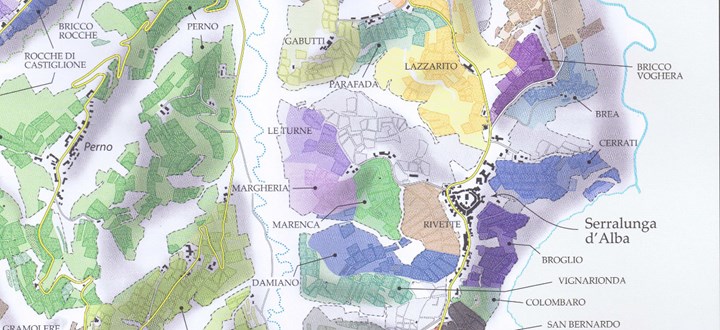
Maps!
The book is accompanied by a folder containing three beautiful, full-color, large-format maps. The first two are of the entire Barolo MGA in the years 1970 and 2017, encompassing the period of greatest change in the region’s history. The third large-format map displays harvest periods for each cru, color-coded from very early to late ripening.
The book itself contains a number of colored maps and charts.
Barolo MGA Vol. II is the same size as Alessandro’s earlier Barolo and Barbaresco books—designed to accompany them on your bookshelf.
Barolo MGA Vol. II
by Alessandro Masnaghetti
284 pp, hardcover.
$89.95
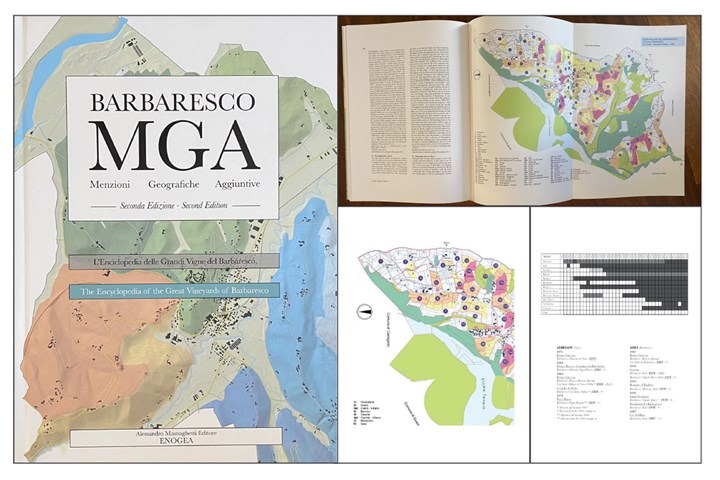
Alessandro Masnaghetti's pioneering books on Barolo and Barbaresco have added immeasurably to our understanding and appreciation of these great wines.
But his quest to unravel the mysteries of their unique terroirs has only just begun. Just as he has added a mountain of new material to his original book on Barolo, he's putting the finishing touches on a greatly expanded and updated second edition of his wonderful Barbaresco MGA: The Encyclopedia of the Great Vineyards of Barbaresco.
The book arrives in the U.S. in late summer or early fall, and it is a must-buy for anyone who loves the wines of the Langhe.
What's Inside
Even if you own the 1st edition of Barbaresco MGA, you'll find the new edition indispensable. These are just some of the advances over the previous edition:
He's added a full section on Barbaresco's geology, mirroring what he did for Barolo.
The maps of the individual communes—as well as of the entire DOCG —have been completely revised and updated.
And if you're an avid Barbaresco drinker or collector, you'll be an instant insider, as the new edition contains many more new, and often unknown, producers and their wines.
In total, the new edition contains:
290 pages
A profile & map of each cru
Parcels owned by each producer
66 images in 3D
20 pages of geological insights
History of bottlings by cru
Vintage analysis
Glossary of 500 used names
And much much more. For just the cost of a bottle or two of Barbaresco, you can own the ultimate encyclopedia of this important winemaking region.
Alessandro Masnaghetti’s work has been praised by journalists and publications ranging from Antonio Galloni and Jancis Robinson to John Gilman and the Wine Spectator. It’s no wonder his vineyard maps have been called the finest ever created and his books demonstrate that he is just as skilled with prose as he is with vineyard mapping.
Barbaresco MGA, 2nd Edition
The Encyclopedia of the Great Vineyards of Barbaresco
by Alessandro Masnaghetti
290 pp, hardcover.
$89.95
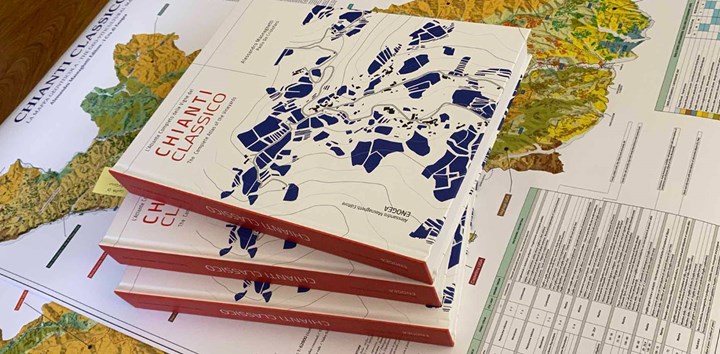
Alessandro Masnaghetti's quest to unravel the terroirs of Italy has taken one step further, with the forthcoming publication of his nearly 500-page book on Chianti Classico.
But as Antonio Galloni’s review, published on Vinous.com, argues, Chianti Classico: The Complete Atlas of the UGA Vineyards is an even greater accomplishment than Alessandro’s previous works, given how little information was previously available to us on the vineyards of Chianti. Antonio calls it “Alessandro’s masterpiece; it is his Sgt. Pepper’s Lonely Hearts Club Band, his Kind of Blue, his The Wall.”
Antonio goes further, calling the book’s publication “a seminal moment for Italian wine … the first definitive text on Chianti Classico. There are only a handful of people, producers included, who possess this knowledge, but only one person who could put it all together. It's a book that instantly elevates the reputation of Chianti Classico and places it among the elite wine regions of the world.”
The timing of the book is perfect, given not only Tuscany's rising importance, but also all the changes that are occurring with respect to labeling. (One good example is the new Gran Selezione category that's proving so confusing to our clients!)
Alessandro has also stepped in at just the right moment to guide us through Chianti's new UGAs, which are similar to, but also quite different from, Barolo's MGAs.
As the Tuscan authorities work to rationalize how Chianti Classico is divided, we will be seeing a whole new set of names applied to different areas of Chianti. Alessandro will not only explain the different areas, he will provide his usually detailed maps, including who owns what vineyards.
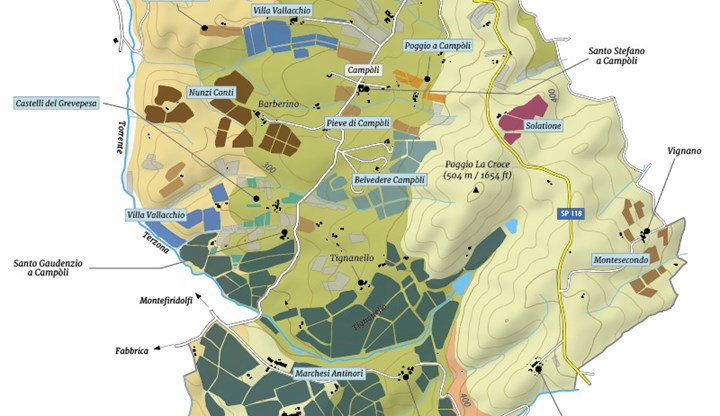
Finally, this book was much needed, given how little most of us know about Tuscany's terroirs and their relationship to wine styles and quality. Like Champagne and Rioja, Chianti Classico until recently was largely about brands. Terroirs were seldom discussed and not at all understood. Alessandro's new book promises to change that.
In the depth and breadth of the information, Chianti Classico: The Complete Atlas of the UGA Vineyards parallels the brilliance of Alessandro's books on Barolo and Barbaresco.
This First Edition will arrive in the U.S. early next year and is a must-buy for anyone with even a passing interest in the wines of Chianti Classico.
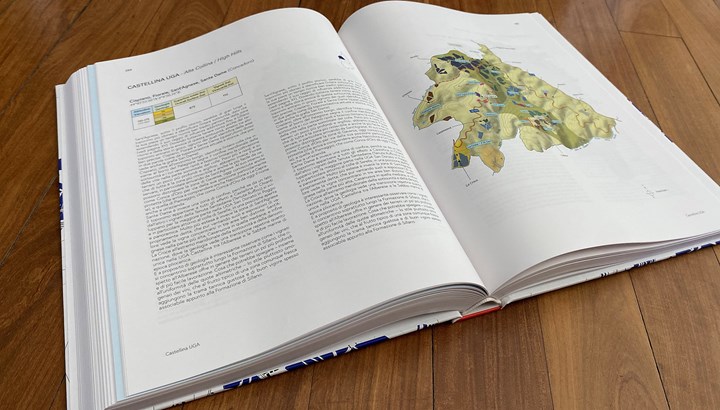
What's Inside
Chianti Classico: The Complete Atlas of the UGA Vineyards is the world’s first book devoted exclusively to Chianti Classico as a territory, its communes, its vineyards, the future Unità Geografica Aggiuntive (UGAs) and the style of wines produced in them. It's the result of 15 years of field work by Alessandro, as well as three decades of tasting.
The book begins with a full history of the region's wines, especially since the 1960s, which has been a time of revolution and upheaval, thanks to the advent of Super Tuscans and changing grape varieties and winemaking.
The biggest part of the book (some 250 pages) is devoted to the UGAs, with a mountain of written information and multiple maps of each area.
Alessandro also provides several scenic bike and car itineraries.
As with his previous books, there is a complete index of producers, with area under vine, location by UGA, and red wines produced.
In total there are nearly 500 pages, with approximately 180 maps.
Chianti Classico: The Complete Atlas
of the UGA Vineyards
463 pp, hardcover
$95
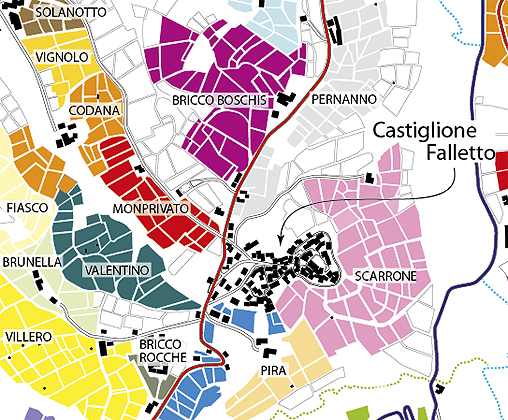
Prior to 2008, wine lovers could only dream of having maps to guide them through the complex web of vineyards in Barolo, Barbaresco and Tuscany. Such maps didn’t exist. But thanks to Alessandro's tireless work, we now have a series of breathtakingly detailed maps to guide and inform us. They are not only a breakthrough in Italian cartography, they are a godsend for lovers of Italian wine.
His work has also expanded into Bordeaux which, incredibly, had never been fully mapped to reveal the actual location of each chateau’s vineyards. His work here promises to revolutionize our understanding of the great Chateaux of Bordeaux in the same way that he has deepened our knowledge of the great vineyards of Barolo and Barbaresco.
Mapping the Langhe
While Masnaghetti has now branched out into a number of regions, he achieved his first acclaim with his extraordinary viticultural maps of Barolo and Barbaresco, which reveal for the first time in map form the everchanging soils, slopes, exposure and ownership of the Langhe’s greatest vineyards.
Each map is large in format (23 x 33 inches) printed on both sides. On the front is a detailed color map of the entire commune, showing all the major slopes and recognized crus—the latter broken down into individual historic parcels. For the visitors, all roads are accurately indicated along with important landmarks like cascina buildings.
The back of the map is even more of a gold mine. Here we find detailed discussions of the styles of wine produced on the various slopes of the commune. But even more tantalizing, each cru is broken down by ownership—with extensive information on altitude, grape varieties, history, the superiority of various parcels and important bottlings. Finally, Masnaghetti provides Google Earth Coordinates, allowing us to view each site from space at earth.google.com.
A Gift for Nebbiolo Lovers
Masnaghetti’s maps are not only a breakthrough in the Langhe’s cartography, they are a godsend for Nebbiolo lovers. Any visitor to the Langhe knows that there are few posted signs to guide us through the vineyards. But with Masnaghetti’s new maps, any visitor can find their way, knowing not only the extent of a particular cru, but also who owns which part.
Masnaghetti continues the pioneering work of the late Renato Ratti who, in the 1960s and 1970s, drew the first truly comprehensive maps of Barolo. But as important as Ratti’s maps were, they were not particularly detailed, serving primarily to locate the crus. They didn’t pretend to explain why one section of a cru had better soil or exposure than another, nor did they take the all-important steps of breaking the crus down into parcels and showing ownership. And the scale of the maps made them of little use to the serious visitor to the vineyards.
In 2000, Slow Foods’ wonderful Wine Atlas of the Langhe expanded on Ratti’s work by revealing more about altitudes, slopes, exposures, roads and landmarks, but the Atlas’ maps lack detail and again stop short of showing ownership. It was left to Masnaghetti to give us the maps of which we’ve long dreamed.
Folded maps are just $12.95. The unfolded version (were available) is $15.95.
| Year | Description | Size | Notes | Avail/ Limit |
Price | |
|---|---|---|---|---|---|---|

|
Masnaghetti Map: Barbaresco Region [Folded] | 6 | $15.95 | add | ||

|
Masnaghetti Map: Chianti Classico [Unfolded] | 6 | $15.95 | add | ||

|
Masnaghetti Map: Barolo Region [Folded] | 12 | $15.95 | add | ||

|
Masnaghetti Map: Verduno [Folded] | 1 | $15.95 | add |
New discoveries, rare bottles of extraordinary provenance, limited time offers delivered to your inbox weekly. Be the first to know.
Please Wait
Adding to Cart.
...Loading...


By clicking the retail or wholesale site button and/or using rarewineco.com you are choosing to accept our use of cookies to provide you the best possible web experience.

